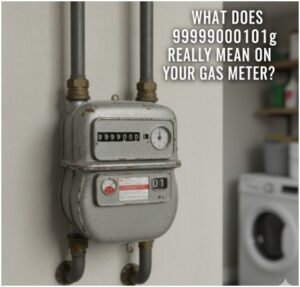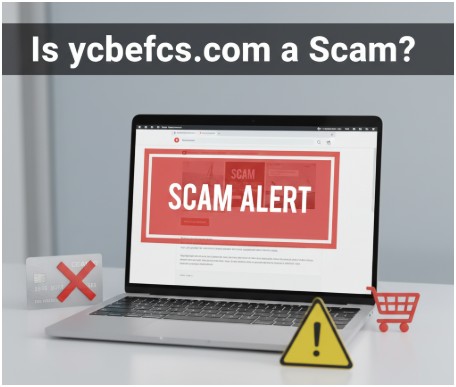I still remember the first time I spotted the code 99999000101g on my gas meter. I froze for a second because it looked like one of those ominous error messages you’d see on a computer screen.
My first thought? “Great, now I’ll have to call customer support and spend half a day on hold.” But after a little digging (and one slightly embarrassing call to my provider), I learned the truth: it wasn’t an error at all. It was simply part of how the meter records or identifies my gas usage.
And trust me, once I figured it out, I wished someone had explained it to me in plain English. So here’s my version of that explanation.
What Is 99999000101g Supposed To Represent?

When you see 99999000101g, your first reaction might be confusion. I know mine was. The good news is it’s not a fault code. There’s nothing wrong with your meter. In fact, it usually points to one of two things:
First, it could be a meter reading. That long string of numbers is a way of recording how much gas has passed through your system, with the “g” at the end signaling “gas.” Think of it like a car’s odometer, but instead of miles, it tracks cubic meters or feet of gas.
Second, it could be a meter serial number. Every gas meter has a unique ID, and that string might be yours. Utility companies rely on these IDs to match your meter with your account, which means it’s an identification tag rather than a usage measure.
Either way, it’s nothing to panic about. It’s not a warning light. It’s not a hidden error code waiting to trip up your service. It’s just information.
How Can You Tell If 99999000101g Is A Reading Or A Serial Number?

This is the part that confused me the most. Was I looking at my gas usage or just a random ID? The easiest way I found to figure it out was by grabbing my gas bill. On the bill, there’s usually something called a Meter Installation Registration Number (MIRN) or sometimes just a serial number. If what you see on the bill matches 99999000101g, then congratulations, that’s your meter’s ID.
But if it doesn’t match, chances are good that what you’re seeing is a reading. Meters can be quirky, especially if you’ve got an older model or one of the newer digital smart meters. Some display strings of numbers that look more complicated than they really are. The “g” at the end, though, is your big clue that it’s linked to gas usage.
So, when in doubt, compare the numbers on your meter to what’s on your bill. That’s your best reality check.
How Do You Read 99999000101g On Your Meter Without Losing Your Mind?
When I first tried reading my gas meter, I made it way harder than it needed to be. I was staring at every digit, every symbol, even the little red numbers at the end. No wonder I couldn’t make sense of it. Here’s what I learned the hard way:
Start by reading the numbers from left to right. That’s your baseline usage. If there are any numbers after a decimal point or ones that show up in red, you can ignore them. They’re usually there for testing or fractional purposes, not billing.
Older meters may have dials instead of digital numbers. In that case, you need to note the number the dial has passed, not the one it’s approaching. It feels a little old-school, but it works.
Modern smart meters make life much easier. The display gives you the reading straight up, though sometimes they throw in that extra letter like “g” at the end. That’s where you’ll see something like 99999000101g pop up.
Once you get the hang of it, it’s as easy as checking the speedometer in your car.
What Should You Do If You’re Still Unsure About 99999000101g?
I’ll be honest, sometimes I just want confirmation from someone who knows more than me. If you’re staring at your meter and wondering if you’re reading it right, there’s no harm in calling your gas provider.
I did, and while it felt silly at first, they actually explained everything clearly. They looked up my meter using my account number and confirmed what I was seeing. Problem solved in ten minutes.
Another step you can take is to double-check the stickers or labels on your actual meter. Some providers put a small guide right on the device. It’ll show you which numbers to pay attention to and which ones to skip. It’s like a cheat sheet built into your equipment.
The one thing you should not do? Try to reset the meter yourself. Unlike a cable box or a Wi-Fi router, gas meters are not meant for DIY resets. That string of numbers won’t disappear, and pressing buttons won’t fix anything. Leave that part to the pros.
How Can You Use 99999000101g When Talking To Your Provider?
Here’s something I learned: utility companies love specifics. If you call them and just say, “Hey, I saw a weird number on my meter,” you’ll end up answering twenty follow-up questions. But if you say, “My meter shows 99999000101g,” they know exactly what you mean. That’s the beauty of these identifiers—they’re precise.
So, whether it’s a reading or a serial number, referencing it in your call or email helps the provider pull up your records faster. You won’t have to fumble around with long explanations. It’s basically your shortcut to getting answers.
FAQ About 99999000101g
Q1: Is 99999000101g an error code?
Nope. It’s not an error code at all. It’s either a reading of your gas usage or a unique meter serial number. It doesn’t mean your meter is broken or unsafe.
Q2: Why does 99999000101g end with a “g”?
That “g” is the simplest part—it stands for gas. It helps distinguish it from codes used on electric or water meters, which may use different endings.
Q3: Can I change or reset 99999000101g?
No, and you don’t need to. It’s not like a password or a glitch. It’s a piece of reference data. Trying to reset it won’t change your bill or your usage.
Q4: How do I confirm if 99999000101g is my serial number?
Check your gas bill. The MIRN or serial number listed there should match the one on your meter. If they align, then it’s your meter’s ID. If not, then it’s likely a reading instead.
Wrapping It Up With A Wink
So here’s the truth: 99999000101g looks intimidating, but it’s just a piece of information tied to your gas meter. It might be your serial number, or it might be a reading, but it’s definitely not a code that screams, “Call a repairman now!”
Once I learned that, my whole outlook on meter reading shifted. Instead of panic, I now see it as a tiny puzzle that keeps my household running smoothly.
If you ever feel lost staring at numbers like this, remember—you don’t have to solve it alone. Check your bill, call your provider, or keep this little guide handy. Gas meters may not be glamorous, but knowing what you’re looking at gives you confidence. And honestly, that feels way better than stressing out over a random string of digits.












